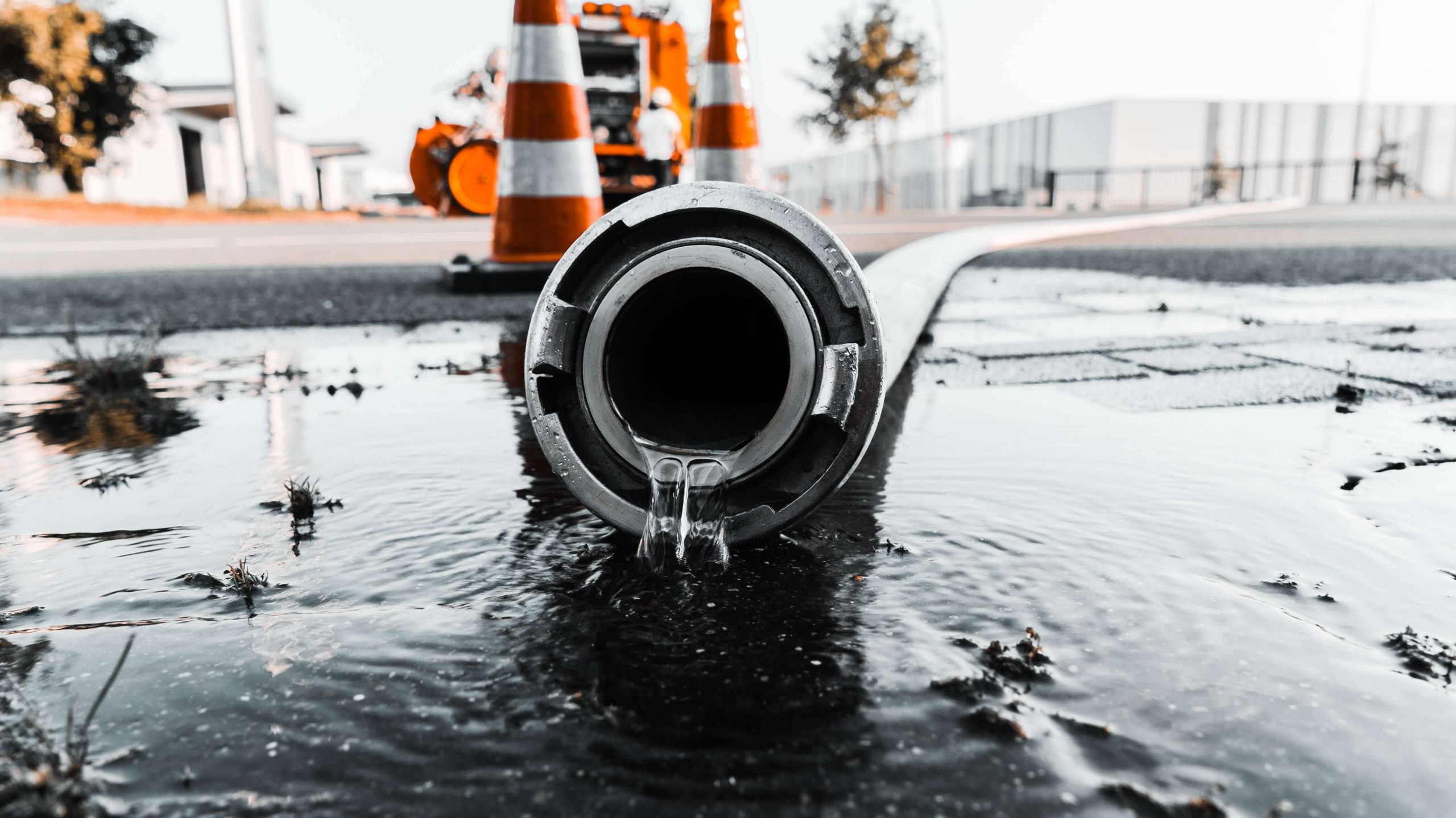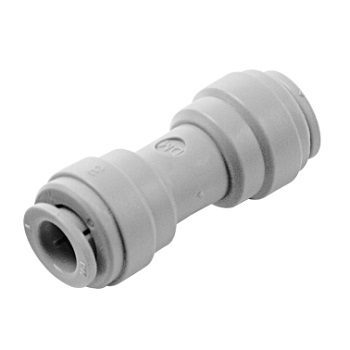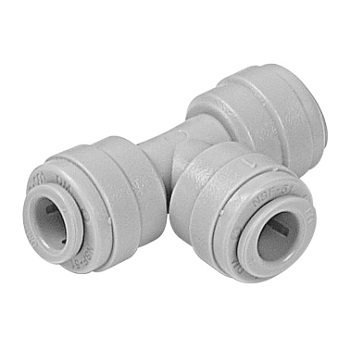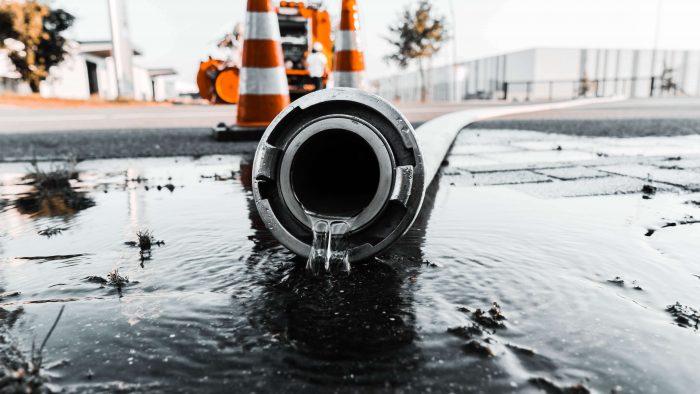
How To Use Quick Connect Fittings
July 13, 2021 11:42 am Comments Off on How To Use Quick Connect FittingsQuick connect fittings have made installing and maintaining water filtration systems easier than ever. They make it possible to connect filter housing with tubing by simply pushed a tube into the end of the fitting. It doesn’t get much easier than that!
However, if not installed correctly they can leak or cause problems with your water filtration system or cause water damage. Quick connect fittings can also degrade over time or become damaged, which can also cause leaks.
To help you avoid any issues with your quick connect fittings, this guide will explain how to fix leaking quick connect fittings. We’ll also explain how they work, so you can become confident when using quick connect fittings. If you have any questions, give us a call on 02 6646 8565 or send us an email at sales@clarencewaterfilters.com.au.

What Are Quick Connect Fittings?
Quick connect were developed in the 1970’s as a way to quickly connect fluid lines to equipment. Initially, they were used for industrial applications where they would connect hydraulic and pneumatic equipment to tubing.
The water filtration and plumbing industries quickly adopted the technology and quick connect fittings are now extremely common. There are many advantages to using quick connect fittings in junction with high pressure tubing include:
- Extremely fast connections
Using a quick connect fitting is as simple as pushing a tube into the fitting. It takes less than a second to form a watertight or airtight connection. - Connections can be made by hand
You don’t need any special tools to install or remove quick connect fittings. This makes them a very convenient option, particularly if you are traveling and tools are not easily available. - Disconnection is easy
To disconnect a connection, you simply release any water pressure in the system, remove any locking clips if fitted, press in the collar around the tubing on the connector, then pull out the tubing. It’s a very simple process that anyone can perform.
Today, there are several manufacturers making quick connect fittings including DMFit and John Guest. There are also generic versions of most quick connect fittings, but the DMFit and John Guest are the 2 main quality manufactures.
In the world of water filtration, the most common tube sizes used in quick connect fittings are ¼”, 5/16”, 3/8”, and 12mm. View our tubing and quick connect options.

How Do Quick Connect Fittings Work?
Quick fit connectors have a clever design that involves three components:
- Connector Body
The body holds the O-ring and collet on either end. The size of the inlet and outlet on the body will determine the size of the tubing that can be used. - O-ring
The o-ring sits inside of the connector body helps the connector retain a water tight or pressurised air seal. - Collet
The collet is located on the end of the body where the tube goes in and has a set of tube locking teeth to clamp down on the tubing to stop it coming out until the collet is pushed back into the connector body.
When you push a tube into a quick connect fitting, it passes through the collet and O-ring then into the body. Once your tubing is fully inserted into the connector, little locking teeth inside of the collet will dig into the outside of the tubing. This makes it virtually impossible for the tube to disconnect.
The harder you pull the tubing, the more the teeth will dig into the tubing, making for a tighter connection. The O-rings will form a seal between the tube and the fitting, which makes it water tight.
To release the tube, you must push the collet in. This causes the teeth to release, which allowing the tube to be removed.

6 Common Causes of Leaky Quick Connect Fittings
Although quick connect fittings are extremely reliable, they must be inspected for correct installation or leaks on a regular basis. In most cases the issue will be related by damage to the fittings or tubing. The most common issues are:
#1 – Incorrect Installation
People who are using a quick connect fitting for the first time may not push the tubing far enough into the connector for it to make good contact with the O-ring. The fitting will not seal and water will bypass the collet’s teeth to leak from the end of the fitting.
When you push tubing into the fitting, you should experience resistance twice. There will be some resistance as the tube passes the collet and a little more as it reaches the O-ring.
Some people will lubricate their tubing with water so it can slide past the O-ring more easily, which makes it simpler to get a solid connection when using larger tubing.
#2 – Poorly Cut Tubing
To make a watertight seal, the end of the tube that goes into your quick connect fitting must be even and clean. If it is jagged or distorted in shape, water can leak through the gaps. If the tube is cut at an angle, it won’t sit flush with the O-ring, making a watertight seal impossible.
The simplest way to get a straight cut is to use a tube cutter. This tool is designed to make a sharp perpendicular cut which will be leak-free. Alternately, you can use a very sharp Stanley knife to make your cut on a hard surface. Be careful when using sharp knives or tools.
#3 – Old Tubing
It’s important to note that tubing can degrade in quality over time, particularly if you are frequently making connections and disconnections. The tube will eventually develop scratches on the surface which make it difficult to form a strong seal with the O-ring.
If you have had the same tubing in place for many years and suddenly have leaks, check the condition of the tubing and sections which are inserted into the fittings. If the tubing is staring to become brittle or signs of age it is recommended to replace the tubing.
Always use a good quality high pressure tubing when replacing old tubing. Some fridge manufactures did use a lower quality tubing which did tend to go brittle over time and this can be caused by heat and other factors.
#4 – Incorrect Tube Size
It can sometimes be difficult to determine the correct tube size for a quick connect fitting. After all, it isn’t easy to see the difference between ¼” and 5/16” when you are staring at the end of a fitting.
When you slide your tubing into the fitting, it should create a snug fit, without excessive wiggle room. You should notice if you have tubing that is too small as it will leak very badly as soon as you turn the water on. If the tubing feels tight going into the collet and fitting, it is on the large size.
#5 – Damaged O-ring
Although it is very rare, the O-rings that sit inside of quick connect fittings can become damaged over time, usually as a result of inserting poorly cut tubing. When the O-ring develops severe scratches or is chipped, it will no longer form a strong seal with the tubing and will begin to leak.
Chemicals can also cause the O-ring to deteriorate prematurely and warp. This also affects its ability to form a strong seal with tubing. O-rings in very old fittings can also become perished, but it usually takes many years.
If you do have a damaged o-ring, your best course of action is usually to replace the entire fitting. However, o-rings can also be replaced using these steps:
- Remove the collet using your fingers
- Pull the damaged O-ring out using a pair of tweezers, toothpick, or some other thin object.
- Insert your new O-ring and tamp it down using a piece of tubing. Push on the O-ring until it is firmly seated in the fitting.
- Slide the collet back onto the fitting
- Check the fitting can hold your tubing well then test it under pressure.
#6 – Excessive Pressure
One of the main benefits of using quick connect fittings is that they can handle high pressure. However, they will eventually fail create an extremely tight bend with a high level of torque. The collet will start to shift and the O-ring will no longer be able to form a tight seal. At this point, the fitting will begin to leak.
Avoid putting torque on your tubing while it is bent. It will start to displace the components of the fitting, moving the collet and possibly stretching out the O-ring. It’s always best to have the tube enter the fitting straight-on.
If you need to make a specific shape with your tubing or move it around objects, use tube elbows instead of making tight bends, this is more critical when using 3/8” or larger tubing. Check out the types of joiners available on our website.
Note most water filtration systems in Australia use 1/4” or 3/8” but some will use other sizes. Most caravans using the high pressure push in tubing main use 12mm.
Some fridge manufactures used two different sized tubes in some models, so always check the size before ordering.
Caution some imported machinery may use a metric size tubing and fittings.
Thanks for reading. If you have any issues with your quick connect fittings, feel free to give us a call We will be more than happy to offer you advice on the best fittings for your water filtration system.
Clarence Water Filters Pty Ltd
Phone: 02 6646 8565
Email: sales@clarencewaterfilters.com.au
Tags: Fittings, John Guest, Leaks, Quick Connect, Tubing, Water ProblemsCategorised in: Fittings
This post was written by Greg

Comments are closed here.